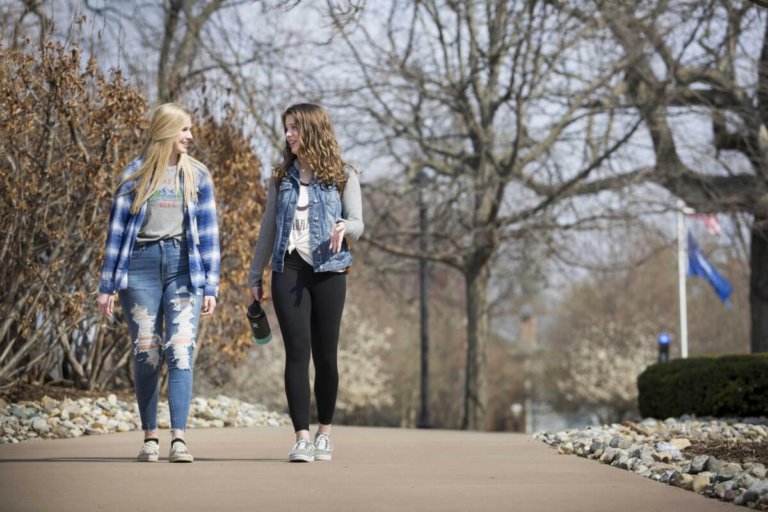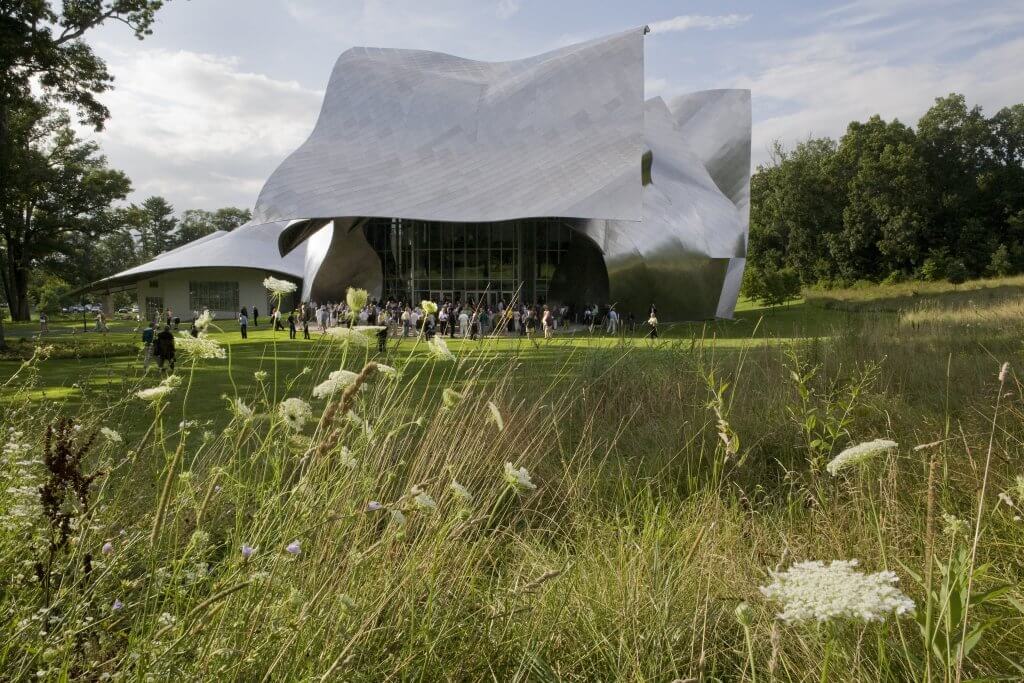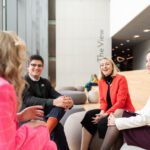
Consisting of four key areas – arts, humanities, social sciences as well as the natural – the liberal arts are more than just an exercise in intellectual exploration. Taught properly, liberal arts graduates have the potential to transform the world we live in.
Bloomberg chair of business journalism at Baruch College of the City University of New York Andrea Gabor said: “Corporations have good business reasons to embrace history, philosophy and English majors. Companies need well-rounded employees conversant in both digital and creative skills.”
“With some additional training and investments by the government, companies can leverage both the liberal arts and digital know-how that is needed for increasingly complex technological systems,” she says.
One only needs to look at some of the collaborations between the liberal arts and technology to see why they make a successful combo.
For instance, in Australia, a group of researchers from the University of Adelaide are trying to stop the population of Australian sea lions from declining.
An endangered species, Australian sea lions’ survival is threatened by many factors, including bycatch in commercial fisheries, entanglement in marine debris and impacts related to climate change.
Therefore, the research team and their coworkers planned to establish a low-risk way of quickly assessing the health of the current population, as these results could help them find potential solutions to the problem.
To do so, they turned their attention to tech.
With the help of a drone, they developed a technique to non-invasively estimate the body condition of the sea lions using the high-resolution photos taken.
“We then used the photos to digitally reconstruct a 3D model of each animal to estimate its length, width and overall volume – and compared these to physical measurements,” they wrote in The Conversation.
The measurements they found were accurate and they found a strong correlation between the mass of an individual and the area and volume measurements derived from the drone pictures.
This example is only one of the many potential breakthroughs that are soon to come from the merging of technology and the liberal arts.
Want to achieve such breakthroughs and more? Here are five liberal arts colleges in the US that will prepare you for the tech-enabled future:
ILLINOIS COLLEGE
Illinois College (IC) in Jacksonville has an international reputation for inspiring achievement and empowering students to make a difference in the world.
It also readies liberal arts students to face the uncertain future of work.

Source: Illinois College
IC does so by offering over 45 different study areas, various study abroad and service learning opportunities as well career-enhancing initiatives. Each course lets students gain the relevant skills and knowledge in an innovative and holistic manner.
IC student Akua Biaa Adu was recently awarded the Women Chemists Committee Outstanding Poster Award, which she credits to the insightful guidance of IC’s expert faculty through the research exploring anti-cancer agents. It was a valuable opportunity to apply classroom concepts and expand her understanding of her majors.
“The award meant so much to me. Mostly, it’s a reflection of all the hard work and effort Dr Lanorio put into teaching and guiding me throughout the entire research process,” she said.
Opportunities to live, study, travel and work abroad supplement the effectiveness of the high-quality programmes here.
There are study and research programmes in countries across the world, such as Cuba and Japan.
By going abroad, IC students get to challenge themselves to adapt to new cultures, learn from diverse perspectives as well as gain valuable skills for their future careers.
COLLEGE OF LIBERAL ARTS, EDUCATION AND HUMAN DEVELOPMENT – THE UNIVERSITY OF NEW ORLEANS
The College of Liberal Arts, Education and Human Development offers new and innovative approaches to learning unique to its region and the Greater New Orleans metro area.
Studying here means gaining access to many research, independent study and internships to get authentic experiences in one’s respective fields. There are also numerous opportunities to work with faculty and staff members at its research centres and institutes.


Source: University of New Orleans
Frequently held are various talks and presentations given by faculty, staff, students, alumni, and community members too. This creates a collaborative environment to share information, network, present research and connect with the community.
For students who are interested in the arts, the School of the Arts brings together five core disciplines: Arts Administration, Film, Music, Theatre and Visual Arts.
Or if learners would prefer to delve into the education sector, they can choose from a range of programmes, such as an Early Childhood Education Teaching Certificate, a Bachelor’s of Secondary Education (BS), or a Master of Arts in Teaching, Special Education and Habilitative Services. Thousands of alumni from these programmes are now positively impacting the educational landscape in the state and nationally.
Other programmes on offer here include Anthropology, English and History.
BARD COLLEGE, NEW YORK
As the President of Bard College Leon Botstein once said: “Colleges and universities possess a unique opportunity. They have the physical spaces and the traditions that can encourage individuals on campus and from surrounding communities to come together around common interests.”
Bard College actively blends traditional liberal arts education and sciences courses with innovative discussions to deliver programmes that provide real-world context for each major.
Their student-to-faculty ratio is 9:1 and a typical class has only 14 students, which means that students work closely with Bard’s talented and engaged faculty. There are 40 academic programmes, including computer science, economics, music and more, to choose from here.

Source: Bard College
Students can dive into a concentration, or cluster of related courses, in conjunction with moderation into a programme. The aim is to offer breadth and depth in learning. Breadth is primarily found through its First-Year Seminar and the distribution requirements. Whereas depth is achieved through each student major in a stand-alone academic programme, possibly in conjunction with a non-stand-alone field of study, or concentration, or with another programme in a joint major.
With the ability to think critically, collaboratively, honestly and openly, Bardians enrich the world after graduation with fresh ideas and strategic social ventures.
ST JOHN’S COLLEGE
St John’s College exudes a vibrant community of learning that is strongly committed to collaborative inquiry.
At this College, students deep dive into the works of some of the world’s greatest writers and thinkers, such as Homer, Plato, and Einstein. This focus on the most important books and ideas of Western civilization makes a great learning opportunity tackling the fundamental questions that confront humanity.
Classes are conducted seminar-style, with faculty facilitating the discussion. Prospective students will be joining the US’s most rigorous liberal arts education programme given its truly comprehensive approach.
The list of Great Books at St John’s includes classic works in philosophy, literature, political science, psychology, history, religion, economics, math, chemistry, physics, biology, astronomy, music, language, and more.
With over 20 percent of students coming from abroad and all walks of life, studying here also means being exposed to many angles. There’s always consideration for a range of views which makes for debates that are globally aware and tackle the texts from new angles.
The inclusive nature of St. John’s makes for an environment of civil discourse, where every student’s voice is heard and open for debate and freedom of expression is encouraged.
SWARTHMORE COLLEGE
The liberal arts hub of Swarthmore College, located in Pennsylvania, has a small student to faculty ratio at 8:1.
With a range of courses for prospective students to choose from, the College looks into Comparative Literature, Medieval Studies, Political Science, and more.
The college campus thrives on open dialogue, shoulder-to-shoulder discovery, face-to-face exploration and a commitment to improving graduate employability.
To study here is to undergo one of the most vigorous and most unique academic experiences in the world. It has a one-of-a-kind Honours Programne as well as a liberal arts curriculum paired with an accredited engineering programme.
Students do biology fieldwork in the Crum Woods for their animal communication seminar. Some conduct research on green roofs and how they reduce energy costs for their environmental economics course. Others rehearse a theatre performance in the beautiful Scott Outdoor Amphitheater.
To ease students’ transition to their careers, the College offers weeklong externships over winter break, internships or research opportunities in the summer, as well as an advising centre for students interested in careers in medicine or law.
Through the Tri-Co Consortium, the College is connected to Bryn Mawr and Haverford Colleges. This allows students to expand their social capital and academic opportunities across three stellar institutions.
*Some of the institutions featured in this article are commercial partners of Study International
Liked this? Then you’ll love…
Illinois College: Inspiring international student talent
UNO: Liberal arts degrees that prepare graduates for the future of work







